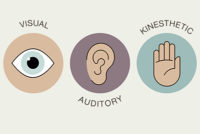Category: Learning & Development
Employees are valuing career development more than ever—it’s a sign that the company is willing to invest in their future. How are businesses approaching training today? What are their pain points, and what topics are being addressed in training?
A key to effective delegation is providing thorough and clear instructions. Obviously, managers don’t want to have to provide details to the point where they’re almost performing the delegated tasks themselves. At the same time, though, they may be concerned about leaving certain details to the discretion of individual staff in some cases.
The stereotype of the “yes man/woman” is a common one. The idea is that employees are loathe to disagree with, or in any way offend, their bosses. Certainly, a baseline of respect is expected of employees. But, it can also be dangerous not to be up front with superiors about genuine concerns.
Being overwhelmed at work can often lead to burnout, absenteeism, and lower productivity levels. It’s bad for business and for talent retention.
The rapid global spread of COVID-19 has led governments around the globe to place restrictions on human interaction. Even state and national governments that haven’t made isolation or quarantine mandatory have discouraged large gatherings and encouraged people to practice social distancing.
According to CrisMarie Campbell and Susan Clarke—cofounders of thrive! Inc.—there is a certain beauty in conflict. In a recent interview, Campbell and Clarke say, “Conflict can be beautiful. No, it’s not easy or fun, but the magic of a team is that people are better together. The catch is that the ‘better’ part can only happen […]
Long-tenured staff are a benefit to any organization. They possess knowledge of and experience in not just the industry but also the specific company they work for. They can serve as mentors and teachers to new hires and serve as stewards for the organization’s long-term goals.
Do you learn visually? Or are you better with hearing something explained in depth and then trying it? Or would you rather just figure out how to do something new through trial and error? Or perhaps you’d like to read the user guide and then give it a go?
Managers want to see the best from their teams and typically mandate a set of criteria and expectations employees must meet. At times, of course, managers may be frustrated by the habits, behaviors, attitudes, and work products of their staff members. But one of the biggest mistakes managers make across all industries is failing to […]
Just because your team is not operating in a single, centralized location does not mean you can’t develop strong bonds between collaborators. In fact, a distributed setup offers an array of possibilities to root team spirit in your company through processes, traditions, and events.
We’ve entered the Age of Acceleration—a time when change is happening faster and faster. As the workplace continues to move more rapidly, so does the market value of skills.













